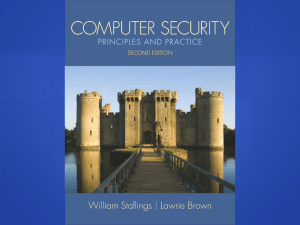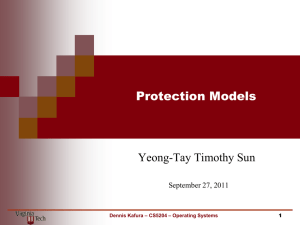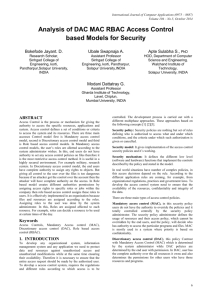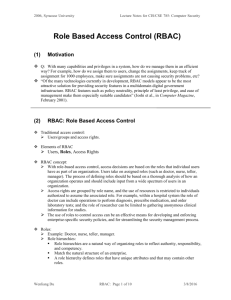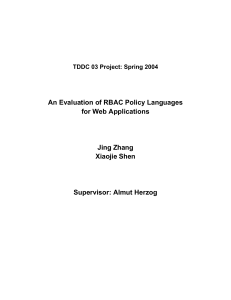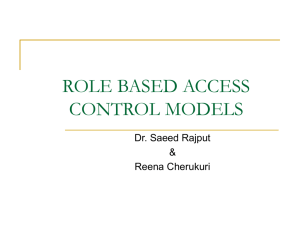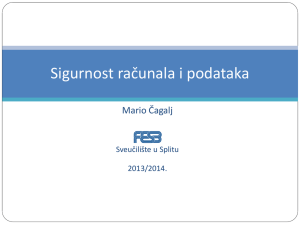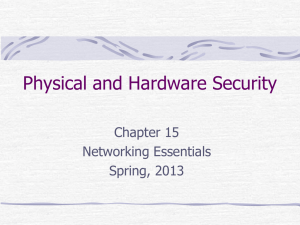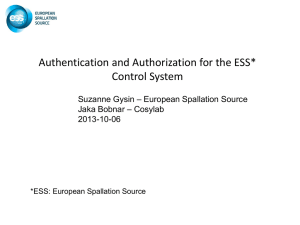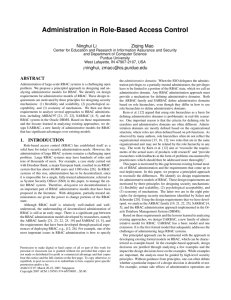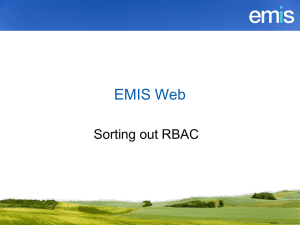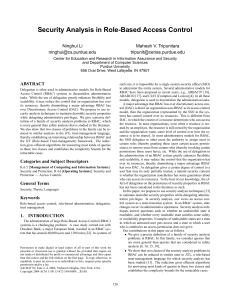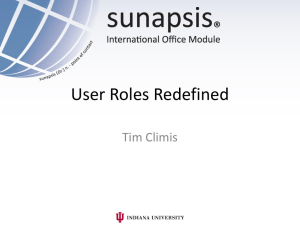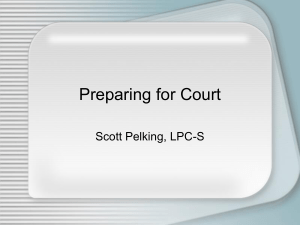RBAC
advertisement
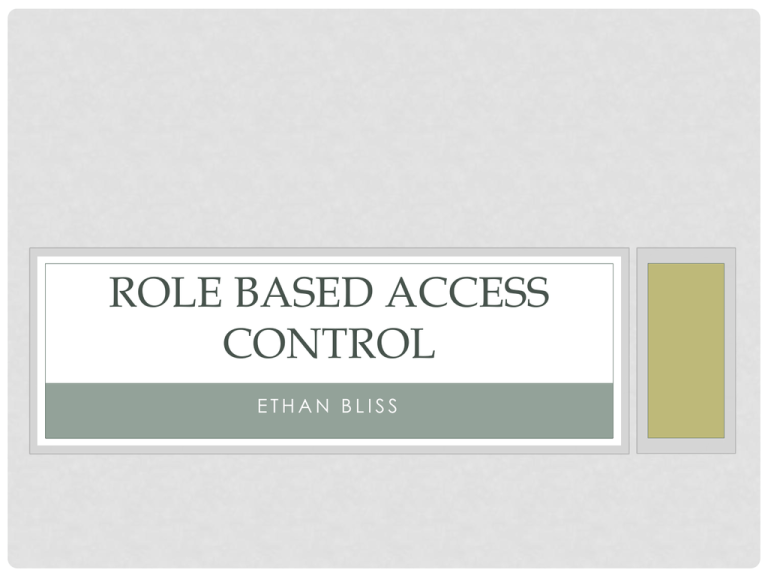
ROLE BASED ACCESS CONTROL ETHAN BLISS Introduction • The need for access control began with multi-user and multi-application computers in the 1970s • System administrator must ensure only authorized users can access certain data and resources • Access Control is a means by which access is enabled or restricted • Who can access • Type of access • Rule Based Access Control (RBAC) introduced in 1992 by Ferraiolo and Kuhn Terminology User: person who uses the computer system Session: an instance of a user’s dialog with a system Subject: a computer process run by a user Object: a resource accessible on a computer system • Operation: an active process invoked by a subject • Permission: authorization to perform an action • • • • Role Based Access Control • With Role-Based Access Control (RBAC), access to objects is based on a user’s role in an organization • A role is essentially a collection of permissions RBAC Rules • Role assignment: • Subject can execute transaction only if subject has been assigned to a role • All users required to have a role • Role authorization: • Subject’s role must be authorized for the subject • Users can only take on a role they are authorized for • Transaction authorization: • Subject can execute transaction only if transaction authorized for subject’s role • Users can only execute transactions they are authorized to RBAC Security Support • RBAC supports three well-known security principles: • Least Privilege • only those permissions required for tasks conducted by members of the role are assigned to role. • Separation of duties • ensure that mutually exclusive roles must be invoked to complete a sensitive task • Data Abstraction • supported by means of abstract permissions such as credit and debit for an account. RBAC Implementation • RBAC implementation ranges from simple to complex • Cannot be treated as a single model • Issues of scope and terminology • Wide variety of technology and choices • Many models use different terminology to describe the same concepts • RBAC standardization was proposed by NIST( National Institute of Standards and Technology). RBAC Standard RBAC Reference Model • Four Components • Core RBAC • Hierarchical RBAC • Limited Hierarchies • General Hierarchies • Static Constrained RBAC • Without Hierarchies • With Hierarchies • Dynamic Constrained RBAC Functional Specification • Set of functional components RBAC Reference Model • Defined in terms of four model components • • • • Core RBAC Hierarchical RBAC Static Separation of Duty Relations Dynamic Separation of Duty Relations • Provide standard vocabulary • Define broad range of RBAC features Core RBAC • The essential elements of RBAC 1. 2. 3. 4. 5. Users Roles Permissions, composed of Operations applied to Objects • Access policy constructed around role • Users assigned to roles • Permissions associated with roles Core RBAC Mapping • Static: do not involve a subject • Users assigned to roles • Roles assigned permissions • Dynamic: subject access • Subject mapped to single user • User may be mapped to multiple subjects • Subject mapped to role set Hierarchical RBAC • Adds requirements for supporting role hierarchies • Inheritance relationship among roles • Parent roles acquire permission of children • Children acquire user membership of parents • Two types • General: allow a role to have more than one immediate ascendant and descendant • Limited: impose restrictions to generate simpler tree structure • 1+ immediate ascendants but one descendent • Vice versa General Hierarchy • Multiple inheritance • Combine functional and organizational roles Constrained RBAC • Adds separation of duty (SoD) relations to RBAC model • Critical operations are divided among 2+ people • No single individual can compromise security • Minimize likelihood of collusion • Used to enforce conflict of interest policies • Allows both static and dynamic SoD Static SoD • Enforce constraints on assignment of users to roles • If a user is assigned to one role, the user is prohibited from being a member of a second role • Roles may be mutually exclusive • Conflicting permissions assigned to these roles • Defined with and without hierarchy • Static SoD with hierarchy: both inherited and directly assigned roles considered Static SoD Example • Billing clerk and accounts receivable clerk mutually exclusive • Deters fraud Dynamic SoD • Also limit permissions available to a user • Users may be authorized for conflicting roles • Limitations imposed while the user is logged on • No user may be active in both roles at once • Dynamic SoD prevents applying conflicting privileges in the same session • Assumes a user cannot terminate a session and log on with another role RBAC Functional Specification • Defines features required of RBAC system Three categories • Administrative Operations • Create, delete, maintain RBAC elements and relations • Administrative Reviews • Query operations on RBAC elements and relations • System level functionality • Creation of user sessions • Role activation/deactivation • Enforcement of role activation constraints RBAC, MAC, and DAC DAC (Dynamic Access Control) • Creators or owners of files assign access rights • Subject with discretionary access can pass information to another subject MAC (Mandatory Access Control) • Access control system mediates all access to objects • Users cannot give away permissions RBAC • More general • Can implement both MAC and DAC DAC using RBAC • More theoretical than practical • RBAC is nondiscretionary in nature • Implemented using roles associated with each object • Four roles and eight permissions for each object • Roles: OWN, PARENT, PARENTwithGRANT, READ • Permissions associated to roles: CanRead, DestroyObject, etc. • Allow authorized users to assign other users to roles MAC using RBAC Easier than implementing DAC Combine role hierarchies and constraints Two role hierarchies, one for read and one for write High security levels on top of read and bottom of write • Read/Write permissions for objects assigned to roles based on security level • • • • Questions?
